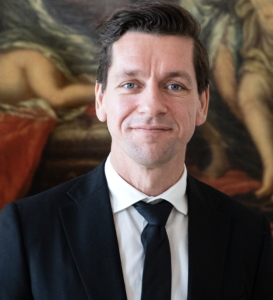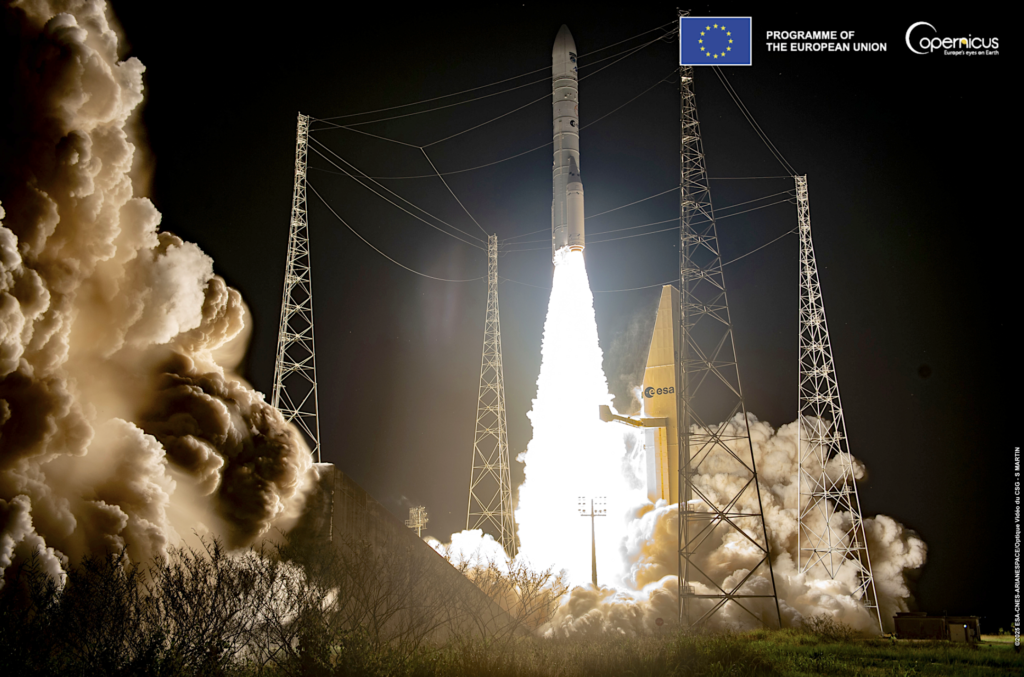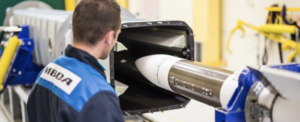| BORDER MANAGEMENT: EU COUNCIL GIVES GREEN LIGHT TO PROGRESSIVE START OF ENTRY/EXIT SYSTEM

The Council has adopted an EU law that will make it possible to start the new Entry/Exit digital border management system (EES) in a gradual way over a period of six months.
The EES will improve the effectiveness and efficiency of controls at the EU’s external borders. The new system will digitally record entries and exits, data from the passport, fingerprints, and facial images of non-EU nationals travelling for short stays in an EU member state.
Kaare Dybvad Bek, Minister for Immigration and Integration said :
« Strong protection of our external borders is vital for the European Union. The new Entry-Exit system will help us ensuring that non-EU nationals travelling to Europe comply with our rules. That will make our borders safer and border checks more efficient. »
Thanks to this system, relevant authorities ranging from border guards to law enforcement bodies will have access to data enabling to verify the third-country nationals’ identity and information on whether they comply with the authorised period of stay in the Schengen area. As a result, the EES will significantly reduce the likelihood of identity fraud and overstay.
Main features of the new law:
The new rules enable those member states who wish to implement the EES gradually over a 180 days period to do so, while making it possible for others to start operating the system fully from day one.
EU countries should all reach full registration, including biometric data, of all individuals in the EES by the end of the six months period.
Until the end of the transition period, member states will also continue to manually stamp travel documents.
Member states may fully or partially suspend operating the EES at certain border crossing in exceptional circumstances (for instance when traffic intensity would lead to very high waiting times).
Next steps
The regulation enters into force on the third day following that of its publication in the Official Journal of the EU. The EES will start operating progressively at a date to be determined by the European Commission.
Background
The EES Regulation, adopted in 2017, required all member states to start using the EES fully and simultaneously. To ensure a smooth launch of the EES and facilitate its timely roll-out in all member states – and because of concerns that a full start of the system could constitute a risk factor for the resilience of the IT system – the Commission proposed a gradual start.
A new regulation was necessary to make such progressive start possible.
| COPERNICUS SOARS INTO NEW HEIGHTS WITH THE LAUNCH OF SENTINEL-5A

Following the launch of Copernicus Sentinel-4A last month, the European Union successfully launched the Copernicus Sentinel-5A to further monitor air quality and emissions around the world.
The satellite lifted off from the Europe’s Spaceport in Kourou, French Guiana at 02:37am (CEST) onboard Ariane 62 rocket and sent its first signal to Earth at 4:47 am. The launch is a result of seamless cooperation with trusted partners, the European Space Agency (ESA), EUMETSAT and Arianespace.
Once calibrated, Copernicus Sentinel-5A will be orbiting the Earth every 100 minutes, to deliver data on air pollutants and other atmospheric trace gases daily, around the world.
Access to frequent, authoritative data directly support EU policies in the areas of pollution reduction and air quality management (e.g. EU Methane Strategy, EU Ambient Air Directive, Zero Pollution Action Plan).
The Sentinel-5 mission together with the geostationary Sentinel-4 and the upcoming CO2M mission secure Copernicus as one of the most advanced Earth Observation systems in the world when it comes to atmosphere monitoring. With the launch of the Copernicus Sentinel-5 mission the EU also cements its position as space power and global leader in EO data provision.
| DISNEY+ DEVELOPING NEW GERMAN REALITY SERIES “YACHT DREAM MONACO”

Disney has revealed new details on an upcoming German reality soap series, which is going to be called “Yacht Dream Monaco”, which will be coming to Disney+.
The show is described as the first European yacht-broker show, and it will give viewers an exclusive look into the luxurious world of yacht brokerage in Monaco. The show will follow two successful yacht brokers who are assembling a new team. Nine applicants will compete for a job on the Côte d’Azur. More details on the applicants will be revealed at a later date.
“Yacht Dream Monaco” is the first European yacht broker show to take a look “behind the backdrops of the fascinating, luxurious and hitherto barely accessible business”. The show’s description also states that “Between challenges, pitching and private life, applicants must prove themselves against the breathtaking backdrop of the Principality.”
This new series will be produced by Jochen Köstler, who is the EVP Non-Fiction at Leonine Studios and founder of the label Leonine Documentaries and said in a statement regarding the new series:
Said Benjamina Mirnik-Voges, VP Original Productions, at Disney said: “It is a great pleasure for us to be able to implement our first production developed by Leonine Documentaries ourselves for such a renowned entertainment brand as Disney+. Yacht Dream Monaco” united in every respect to our goal of producing content with a perfect mix of documentation, entertainment and great production value.”
“This not only adds a unique format to our portfolio, but also join the ranks of successful entertainment formats in Germany, which other markets have already established on Disney+ with great success.”
The series will consist of eight episodes and is being produced by Leonine Documentaries and i&u TV. It has been created by Lisa Kaniß.
No release date details have been announced for “Yacht Dream Monaco”, but production is scheduled to begin later in the autumn. As with other international originals, it’s likely this will also be released on Disney+ globally.
| READY FOR THE 15TH EASN INTERNATIONAL CONFERENCE?
Clean Aviation is delighted to invite you to the 15th EASN International Conference, a premier event dedicated to “Innovation in Aviation & Space towards sustainability today and tomorrow”. This year’s conference is co-organised by the EASN Association and the Escuela Tecnica Superior de Ingenieria Aeronautica y del Espacio (ETSIAE), and will take place at the Universidad Politecnica de Madrid (UPM), from October 14th to 17th, 2025, in the vibrant city of Madrid, Spain.
The EASN Conference Series has become a leading platform for fostering dialogue and collaboration among key stakeholders in aviation and space, including representatives from academia, industry, research organizations, and policymaking bodies.
The conference offers a unique opportunity to:
Present and discuss cutting-edge research and disruptive innovations in aviation and space.
Showcase European projects, celebrate key milestones, and exchange ideas about the future directions of our sector.
Engage with prominent figures and participate in knowledge-sharing sessions, curated by distinguished experts to facilitate meaningful collaboration.
Beyond the technical sessions, the 15th EASN International Conference aspires to serve as a vibrant hub for European dissemination and exploitation activities.
We are excited to host this prestigious event in Madrid, a city rich in culture and history, which provides the perfect backdrop for forging connections and advancing the collective vision of the aviation and space community.
| UKRAINE FACILITY: KYIV TO RECEIVE OVER €3.2 BILLION IN EU SUPPORT FOLLOWING COUNCIL DECISION APPROVING FOURTH PAYMENT

Jensen Huang, NVIDIA’s founder and CEO, continued his European tour in June – which included stops at London Tech Week and GTC Paris – with a key visit to Germany. In discussions with Chancellor Friedrich Merz, they explored strategic alliances aimed at pioneering breakthroughs in the world’s inaugural industrial AI cloud.
The AI factory, based in Germany and managed by Deutsche Telekom, will drive innovation in European manufacturing, enhancing efficiency in design, engineering, simulation, digital twins, and robotics.
‘In the era of AI, every manufacturer needs two factories: one for making things, and one for creating the intelligence that powers them,’ said Jensen Huang, founder and CEO of NVIDIA. ‘By building Europe’s first industrial AI infrastructure, we’re enabling the region’s leading industrial companies to advance simulation-first, AI-driven manufacturing.’
‘Europe’s technological future needs a sprint, not a stroll,’ said Timotheus Höttges, CEO of Deutsche Telekom AG. ‘We must seize the opportunities of artificial intelligence now, revolutionise our industry and secure a leading position in the global technology competition. Our economic success depends on quick decisions and collaborative innovations.’
A game-changer for Germany’s AI ambitions, this unprecedented infrastructure—the country’s biggest AI project—lays the foundation for sovereign AI and faster industrial adoption. The initial rollout features 10,000 NVIDIA Blackwell GPUs across DGX B200 systems and RTX PRO Servers, enhanced by NVIDIA’s networking and AI software.
NEURA Robotics, a German leader in cognitive robotics and physical AI, will leverage these computing resources to enhance its cutting-edge training centres for cognitive robots. This demonstrates how advanced infrastructure can accelerate the evolution of embodied AI. Central to this effort is the Neuraverse – an interconnected robot ecosystem where machines learn collectively across industrial and household applications. Functioning like an app store for robotic intelligence, this platform enables ongoing development and real-world deployment of skills for tasks ranging from welding to domestic chores.
Powering Europe’s manufacturing revolution, this AI cloud marks a critical leap toward simulation-driven industry while setting the stage for Germany’s ambitious AI gigafactories. When the 100,000-GPU programme comes online in 2027 through EU-German collaboration, it will transform the innovation landscape—giving businesses, startups, and research institutions equal access to world-class computing power via a growing network of high-performance centres.
NVIDIA’s Deep Learning Institute provides comprehensive AI education and certification programmes worldwide. These learning resources are fully integrated into Germany’s computing infrastructure, creating accessible upskilling pathways for professionals across the nation.
| EUIPO RELEASES STUDY ON GENERATIVE ARTIFICIAL INTELLIGENCE AND COPYRIGHT

The European Union Intellectual Property Office (EUIPO) released a comprehensive study titled “The development of Generative Artificial Intelligence from a Copyright perspective”. This highly anticipated study is the result of extensive research and analysis.
Over the past number of years Artificial Intelligence (AI) technologies have undergone major advances, most notably with the release of Large Language Models and Generative AI (GenAI) systems. GenAI services that generate text, code, images, videos, and audio content are now widely available. This has led policymakers and regulators to examine how existing legal frameworks should evolve to address the implications of large-scale AI adoption, and to balance innovation with intellectual property (IP) protection.
This study explores the developments in GenAI from the perspective of EU copyright law. It is structured around three main components, (1) a technical, legal and economic analysis to further understand the functionality of GenAI and the implications of its development, as well as a detailed examination of copyright-related issues regarding the (2) use of content in GenAI services development and the (3) generation of content.
Main findings
Access to high-quality content is central to the development of GenAI services. The AI training process is complex and uses content as input at different stages. However, as GenAI models are “specialised” for certain functionalities they need access to high quality and up-to date content, which is reflected in emergence of a direct licensing market, with some GenAI developers licensing access and use of high-quality content from copyright holders. The capacity for copyright holders to effectively reserve their rights a pre-requisite for the licensing market to develop.
No ‘one-size-fits all’ solution for copyright holders to protect their rights has emerged yet. Instead, different approaches and solutions are developing for copyright holders to protect their rights, and for AI developers to respect their regulatory obligations: On the one side, the rights reservation mechanisms for the INPUT phase (related to training AI models), whereby rightsholders can express their opt out from the ‘text and data mining’ (TDM)-exception. On the other side, transparency measures exist for the OUTPUT phase that allow the indication and recognition of AI generated content.
Public authorities, such as national IP authorities and the EUIPO, may play a role by providing technical support (for copyright holders to reserve their rights, and for AI developers to effectively respect such reservations) as well as non-technical support (e.g., public awareness, forums for technical information sharing, providing information to the public on available solutions, trends and developments).
How was the study conducted?
This study has been prepared by a research team of the University of Turin Law School and the Nexa Center for Internet & Society from the Polytechnic of Turin for the European Union Intellectual Property Office (EUIPO). The research that took place between September 2024 and March 2025 was supported by extensive desk research as well as interviews from key stakeholder groups including, copyright holders, AI companies, technology solution providers as well as public organisations.
Source : euipo.europa.eu
| MILLIONS IN COUNTERFEIT CASH SEIZED IN MAJOR INTERNATIONAL HAUL
 The Europol-supported operation intercepted items with an estimated value of EUR 66 million
The Europol-supported operation intercepted items with an estimated value of EUR 66 million
Europol has supported a joint law enforcement operation that disrupted the distribution of counterfeit currency through postal services. The action resulted in the interception of nearly one million items, including fake euros, US dollars, and British pounds, with an estimated value of over EUR 66 million.
The operation’s success was driven by the outstanding collaboration between authorities from 18 countries, which helped investigators gain a deeper understanding of criminal methods and trafficking routes. Thanks to this joint effort, the operation triggered 102 new investigations targeting criminal networks engaged in currency counterfeiting.
Overall results of the operation:
297 parcels containing counterfeit currency seized;
More than 990 000 counterfeit items intercepted, including banknotes and coins over EUR 280 000, USD 679 000 and GBP 12 000.
As a leading EU agency in the fight against currency counterfeiting, Europol provided expertise, coordinated the exchange of information and supported national authorities in detecting suspicious parcels. In addition, Europol helped refine risk indicators, enabling more effective identification of counterfeit currency distribution in the future. The European Anti-Fraud Office (OLAF) also supported the investigation by providing technical infrastructure during the operational phase.
New criminal networks uncovered
The investigation, led by Austria, Portugal and Spain, was conducted between October 2024 and March 2025 and uncovered several new criminal networks engaged in currency counterfeiting. Most of these networks operate from outside the EU, mainly from Asia, but also from America and the Middle East.
This operation marked the second phase of an earlier action in which Europol had also been involved. Stronger and improved cooperation between customs and police forces allowed authorities to achieve significantly better results this time. One remarkable success came from Romania, where a single coordinated action by national authorities resulted in the seizure of USD 600 000 in counterfeit currency.
As in the first iteration of the operation, the vast majority of the seized items were altered-design banknotes, often referred to as ‘movie money’. These reproductions have a similar shape and colour to real banknotes, but include a small disclaimer indicating they are fake. However, these disclaimers are often overlooked, allowing criminals to pass them off as genuine currency.
EMPACT
The European Multidisciplinary Platform Against Criminal Threats (EMPACT) tackles the most important threats posed by organised and serious international crime affecting the EU. EMPACT strengthens intelligence, strategic and operational cooperation between national authorities, EU institutions and bodies, and international partners. EMPACT runs in four-year cycles focusing on common EU crime priorities.
| IN VISION CORRECTION, ELECTROCHEMISTRY MIGHT EVENTUALLY TAKE THE PLACE OF LASERS

Laser eye surgery, which uses light pulses to reshape the cornea, has promised glasses-free living for more than thirty years. Even so, LASIK and other similar operations are still invasive, including incisions, corneal tissue removal, and a permanent change to the natural structure of the eye. A completely different strategy, electromechanical reshaping (EMR), has now been revealed by a study team headed by Dr. Michael Hill, a chemistry professor at Occidental College, and Dr. Brian Wong of the University of California, Irvine.
The technique uses a tiny electrochemical phenomenon to make the cornea malleable without breaking it, and it was presented at an American Chemical Society’s meeting. The cornea is pressed up against a tiny platinum contact that resembles a curved lens and is submerged in a mild saline solution. The team causes local pH shifts in the eye’s collagen fibres by applying a moderate electrical current. The corneal tissue softens sufficiently to fit the mould exactly for less than a minute. The tissue retains its new curvature after stiffening once the electrical current is cut off.
Ex vivo rabbit eye tests are promising. Microscopic analyses verified that the majority of cells remained alive, and the operation adjusted the focus to match the intended “prescription” in 10 of the twelve treated corneas. Importantly, the method accomplished this without causing any wounds to open or tissue to be removed. The procedure seemed to reverse some types of chemical clouding, which the researchers also noticed as a surprising side effect. This suggests that EMR may be able to treat both refractive faults and early indicators of corneal damage.
EMR has the potential to transform ophthalmology if it is evolved into a clinical tool. The EMR device is theoretically straightforward and might be modified for use in a variety of contexts, including low-resource environments, in contrast to lasers, which require costly equipment and highly skilled surgeons. Because the integrity of the eye is maintained, patients may have a decreased chance of problems including dry eye, infection, or corneal thinning.
The pledge is still hypothetical for the time being. There are still numerous unanswered issues about the precise molecular mechanisms at play, the safety of repeated treatments, and the long-term stability of the reshaping. Human studies have not yet started. However, this electrochemical lens-molding method suggests that corrective eye surgery may become quick, non-invasive, and reversible in the future, which could put the surgical laser in the past.
| MBDA ON TRACK WITH ITS ACCELERATION OF ASTER MISSILE PRODUCTION

MBDA has delivered – through the OCCAR (Organisation for Joint Armament Cooperation) – the first batch of ASTER munitions from accelerated production measures that are part of the company’s ramp-up efforts.
This delivery comes less than two and a half years after an initial contract with the OCCAR strengthening the air defence capabilities of France and Italy and a further contract to supplement stocks and accelerate production of ASTER missiles, including for the United Kingdom.
The delivery is a first step towards the schedule acceleration underway. It results from the investments made by MBDA and its industrial partners to meet the needs of its customers and strengthen Europe’s resilience in the face of new threats.
On 23 July 2025, MBDA delivered the first batch of ASTER missiles less than two and a half years since the order was placed as part of a joint acquisition led by OCCAR with Eurosam, the Franco-Italian joint venture of MBDA and Thales.
This acquisition, launched in December 2022, is a cooperation between France and Italy, and supplemented by a further order in February 2025, aiming to strengthen air defence systems of European countries with the production of nearly 1,000 ASTER missiles for the armed forces of Italy, the United Kingdom and France.
The accelerated production of this first batch of missiles is a first step towards the schedule acceleration underway. It is the result of the investments and the actions taken by the MBDA Group, with its customers and partners, to meet the challenges of increasing production.The delivery confirms MBDA’s ability to meet its commitment to reducing the production lead-time of ASTER missiles in 2026 by more than half compared to 2022, and deliver five times more ASTER missiles than originally planned in 2025.
Eric Béranger, CEO of MBDA, said: “The delivery of the first ASTER missiles that benefited from significantly reduced production times is a success for all MBDA teams. I thank them for their ongoing efforts, as well as the industrial partners and State actors involved. It demonstrates our commitment to working alongside our customers to ensure the ramp-up of our industrial facilities and the strengthening of our defence industrial and technological base. This acceleration will provide Italian, French and British armed forces with essential air defence systems to protect European skies, as demonstrated by the use of ASTER in the Red Sea and Ukraine, and increase NATO’s defence capabilities.”
MBDA introduced measures to ramp-up production as early as 2024 to accelerate delivery of missiles already ordered. These measures were formalized in February 2025 through the order of additional ASTER missiles for France, Italy and the UK.
The Group has underpinned its ramp-up efforts, through investment, in particular in its production facilities in Bourges and Selles-Saint-Denis in France and in Fusaro in Italy. It has significantly recruited, built up raw material and component stocks, and supported its entire value chain in Europe.
Between 2023 and 2025, MBDA will have doubled the production of new missiles for the Group as a whole and will continue to invest €2.4 billion between 2025 and 2029 to ensure the ramp-up of production over the coming years.
MBDA is a unique multi-national European group, a world-leader in the field of complex weapon systems.
| CZECHIA: THREE INDIVIDUALS AND THREE COMPANIES CONVICTED OF €5.5 MILLION FRAUD INVOLVING NANOBOTS RESEARCH FUNDS

The Regional Court in Prague (Czechia) has convicted three individuals and three companies of a €5.5 million subsidy fraud involving nanobot research, as well as money laundering, following an investigation and indictment by the European Public Prosecutor’s Office (EPPO) in Prague.
The main defendant, in collusion with the others, submitted applications for research funding without any intention of carrying out the projects. The court found that he had provided false documentation to justify the grants, including fabricated project assessments, forged invoices and contracts, and manipulated selection procedures. The funds were subsequently laundered through companies under his control.
The court ruled in full accordance with the indictment, finding that 17 projects were used to obtain funds fraudulently, causing damage of around €5.5 million to the Czech and EU budgets. An attempt to obtain an additional €5 million was also uncovered. The court further concluded that financial flows were deliberately concealed, indicating clear intent to launder the proceeds.
Much of the misused funding was spent on personal consumption and investments, including the purchase of 8 000 model railway trains, worth approximately €600 000 (CZK 15 million).
The main defendant was sentenced to eight years’ imprisonment, a seven-year ban from holding positions in commercial company management and ordered to pay compensation for the damages. The court also ordered the forfeiture of frozen assets, including the model train collection.
Two other individuals were convicted of aiding in the fraud. They received suspended sentences of three years’ imprisonment, with four years of probation. The involved companies were ordered to forfeit frozen assets and are barred from applying for future subsidies. The total value of assets to be forfeited is estimated at €2 million.
The judgment is not final and may be subject to appeal.
The EPPO is the independent public prosecution office of the European Union. It is responsible for investigating, prosecuting, and bringing to judgment crimes against the financial interests of the EU.
| KNOW YOUR EU PASSENGER RIGHTS BEFORE YOU TRAVEL

All packed, and ready to go? For those of you heading off on a summer break soon, we hope your travel plans don’t go wrong, but if they should, you should know that EU travel rules cover passengers in a number of eventualities. Whether your flight is cancelled, your train delayed or your luggage lost aboard your cruise ship, you have the right to make a claim under EU-wide passenger rights.
What you are entitled to if you need to make a claim will vary from the type of transport you use (air, rail, bus/coach or boat) and whether you travel into, out or within the EU. In most cases, however, there is a standard procedure to follow if you need to make a claim over a delay, cancellation or problems with luggage.
First, contact the travel company you bought your ticket from, using the complaint form they provide. If you don’t receive a reply from the company within 1 to 3 months depending on the type of chosen transport, or if you are not satisfied with the reply, you can lodge a complaint with the relevant national authority in the country where the problem happened. You can always contact your local European Consumer Centre for help and advice on problems related to passenger rights, too.
If you still encounter problems with your claim, you can also try to resolve your dispute using out-of-court procedures – or an Alternative Dispute Resolution entity. If you bought your ticket online, you can submit your complaint via the Online Dispute Resolution platform. These 2 forms of dispute resolution are only available to EU residents.
If you have a disability or reduced mobility, you have the right to access air, train, bus, coach, or boat travel like anybody else and the right to free assistance at terminals and on-board vehicles. If you feel your rights have been breached, follow the guidelines above for making a claim. More details on your passenger rights are given below.
Download the “Your Passenger Rights” app to your smartphone
EU Directorate-General for Communication
| UK TARGETS SANCTIONS CIRCUMVENTION AND CRYPTO NETWORKS EXPLOITED BY RUSSIA

· UK cracks down on Russia’s attempts to avoid sanctions by exploiting Kyrgyz financial systems and crypto networks, building on over 2700 existing UK sanctions against Russia.
· Action comes after the United States announced similar measures, demonstrating shared commitment to crack down on sanctions circumvention.
· With US-led talks ongoing, the UK and our allies remain united in pursuit of a just and lasting peace in Ukraine.
Today’s action comes as the UK and international allies redoubled efforts to secure a just and lasting peace in Ukraine.
With sanctions continuing to bite, Russia has turned to the Kyrgyz financial sector to channel money through opaque financial networks, including through the use of cryptocurrencies. These networks have created a convoluted scheme to evade sanctions imposed by the UK and its partners.
Today’s action closes in on the Kyrgyzstan-based Capital Bank, and its director Kantemir Chalbayev, which Russia uses to pay for military goods. Sanctions also hit the Grinex and Meer cryptocurrency exchanges, the infrastructure behind a new rouble-backed cryptocurrency token A7A5, which has moved $9.3bn on a dedicated crypto exchange in just four months and is specifically designed as an attempt to evade western sanctions.
Keeping up the pressure on Russia’s war machine is vital to reinforcing President Trump’s efforts to stop the killing in Ukraine and force Putin to engage in meaningful talks. It is also a crucial step for security in the UK and beyond. Keeping the British people safe is this government’s number one priority and is an integral part of the Prime Minister’s Plan for Change.
Sanctions Minister, Stephen Doughty said: « If the Kremlin thinks they can hide their desperate attempts to soften the blow of our sanctions by laundering transactions through dodgy crypto networks – they are sorely mistaken ».
These sanctions keep up the pressure on Putin at a critical time and crack down on the illicit networks being used to funnel money into his war chest.
Alongside our allies, we will continue to support the US-led drive to end this illegal war and secure a just and lasting peace.
The sanctions come after the Prime Minister, European leaders, President Zelenskyy and President Trump met in Washington this week in pursuit of a just and lasting peace for Ukraine.
As long as the killing in Ukraine continues, the UK and its allies stand ready to rachet up pressure on Russia and will continue to strengthen sanctions.
These new sanctions will close the net around illicit money schemes and demonstrate our resolve to crack down on international sanctions evasions mechanisms which are helping to bankroll the invasion of Ukraine, wherever they are found.


